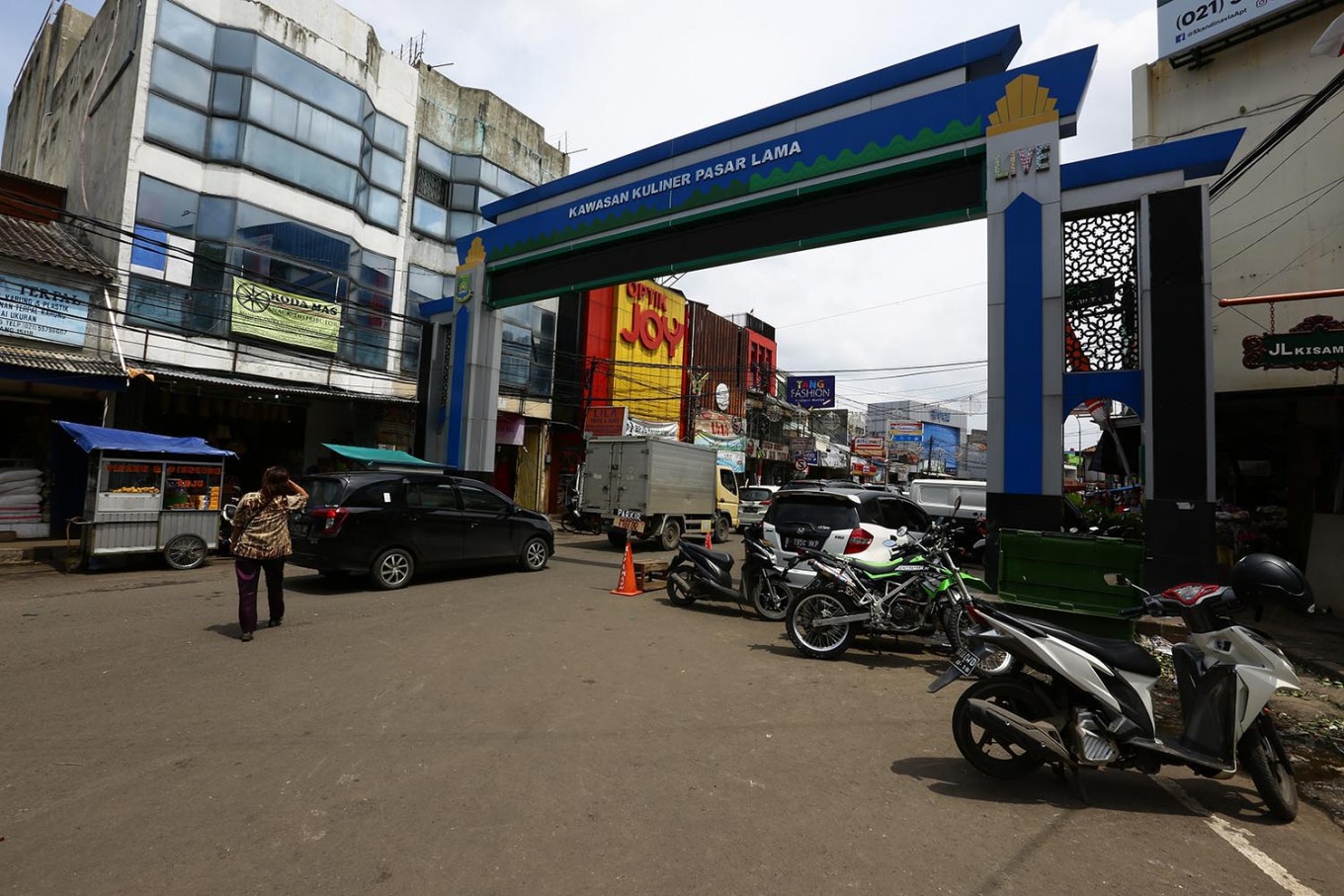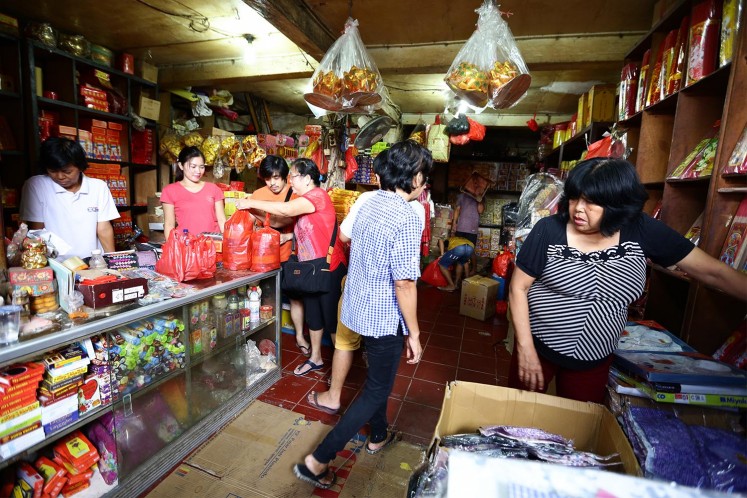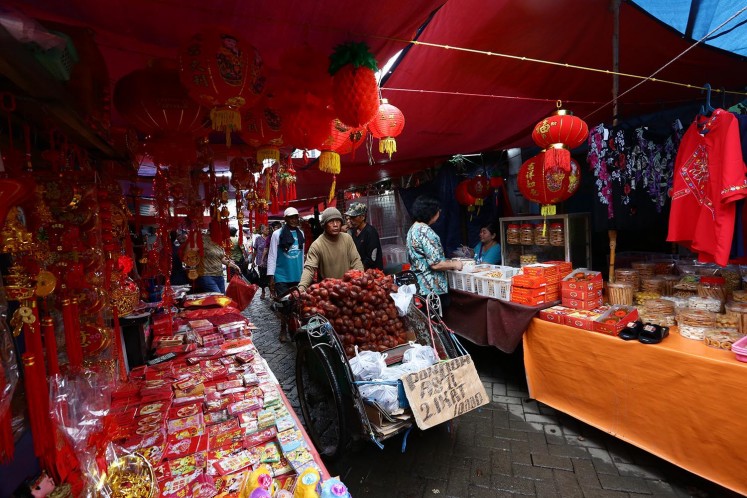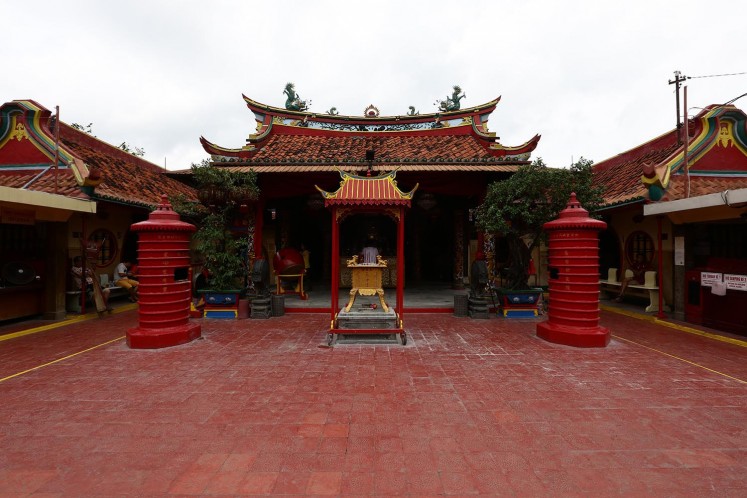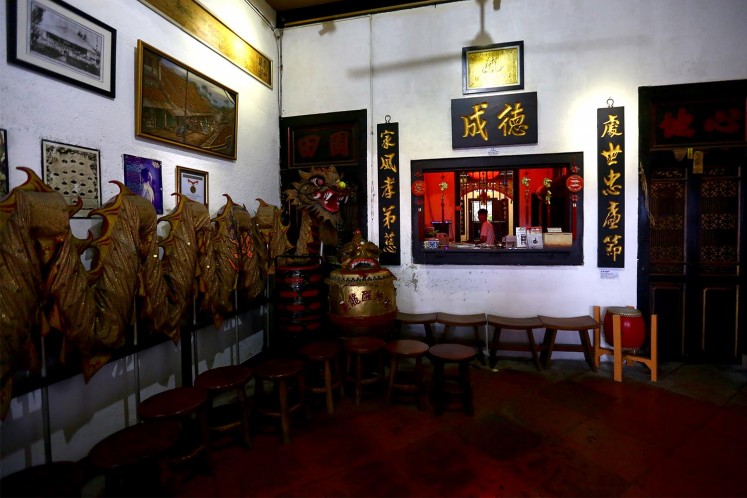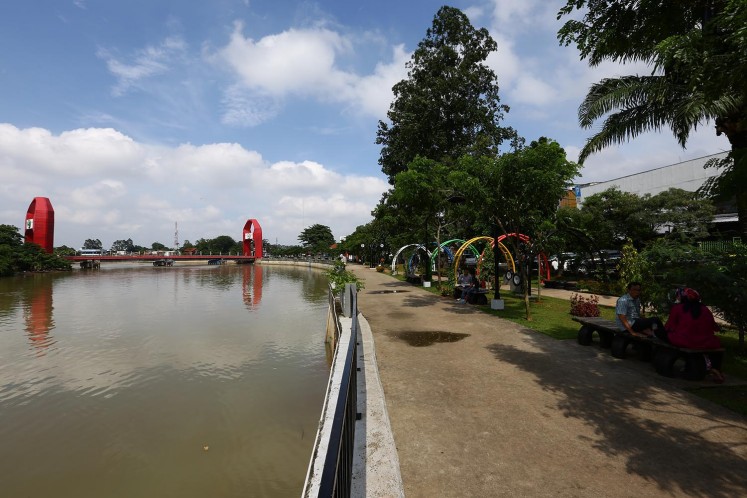Popular Reads
Top Results
Can't find what you're looking for?
View all search resultsPopular Reads
Top Results
Can't find what you're looking for?
View all search resultsJakpost guide to Pasar Lama, Tangerang
Change text size
Gift Premium Articles
to Anyone
T
he Pasar Lama area of Tangerang is believed to be the site of one of the first Chinese settlements in Indonesia. Its history can be traced back to 1407, when Chen Ci Lung led a group of people sailing from China and arriving on the Cisadane River near the Lama Market.
Because of these roots, the traditional marketplace is surrounded by cultural sites that are well worth visiting to learn about the history of the settlers, who have since become known as Cina Benteng, which translates to “the Chinese of the fort”. That name refers to a Dutch fort built in the 17th century in a bend of the Cisadane River.
How to get there
Pasar Lama is located approximately a five-minute walk from Tangerang train station, which is the last stop on the Tangerang line.
The entrance to the traditional market that gives the area its name is located on the corner of Jl. Kisamaun and Jl. Bakti Saham.
Numerous becak (pedicabs) operating in the area can take you to nearby places.
What to wear
As it is a traditional market with a cramped combination of indoor shops and outdoor stalls, things can get messy.
Several shops sell prayer items, such as prayer incense sticks, for those going to the temple. (JP/Wienda Parwitasari)It’s advisable to wear casual clothes, such as T-shirt and jeans. Although covered shoes are highly recommended, locals prefer to wear sandals for convenience.
Read also: Jakpost guide to Glodok
What to do
Visit Lama Market to do some grocery shopping, as basic everyday ingredients can easily be found, including fresh fruits and vegetables. Meat, poultry and seafood are also widely available at the market.
Lama Market in Tangerang (JP/Wienda Parwitasari)In preparation for the celebration of Chinese New Year in early February, the market was stocked with traditional decoration, angpao money gift envelopes, toys commemorating the new Year of the Dog, as well as with sweets and cakes, including kue keranjang, or nian gao (basket cake).
Since the market is also located near a Chinese temple, the historical Boen Tek Bio, several shops sell prayer items, such as prayer incense sticks.
Boen Tek Bio Temple in Tangerang (JP/Wienda Parwitasari)While in the area, visitors could enter the Boen Tek Bio temple, which is the oldest Chinese temple in Tangerang. Located on the corner of Jl. Bakti Saham and Jl. Cilame, the historical site was founded in 1684, with the oldest part of the present structure believed to date back to 1775.
The temple has gone through several rounds of renovation, with its largest one conducted in 1904.
As it is a sacred place of worship, visitors should be respectful when entering the temple complex, minding their behavior, using polite language as well as dressing appropriately.
Further down Jl. Cilame, you’ll find the Benteng Heritage Museum.
Inside the Benteng Heritage Museum in Tangerang (JP/Wienda Parwitasari)There, visitors can learn about the life and history of Chinese settlements in Indonesia. The museum, which is a restored house of Chinese architecture believed to have been built around 17th century, also hosts Chinese artifacts found in the vicinity of old Tangerang.
Read also: Benteng Heritage Museum: Pearl of Tangerang
Near the market is the Cisadane River, where those looking to get some light exercise could stroll along the path on the riverbank all the way down to Taman Gajah, which has a playground and a small park.
Gajah Park in Tangerang (JP/Wienda Parwitasari)What to eat
On Jl. Kisamaun, the main stretch just outside of the entrance to Lama Market, visitors can find numerous restaurants that are open throughout the day.
One of the well-known local eateries is Laksa Sari, with its signature dish of a bowl of savory laksa broth filled with lontong (rice cake), shredded chicken, tofu and vermicelli noodles and topped with emping (nut crackers).
Another dish to try at Laksa Sari is asinan sayur (pickled vegetables), which consists of boiled vegetables and crackers drizzled with creamy peanut sauce and kecap (soy sauce).
Laksa and asinan dishes at a local eatery near Lama Market (JP/Wienda Parwitasari)At night, the street transforms into a culinary hotspot, with food stalls stretching out along both sides of the road. Visitors can find anything from rice dishes, satays and soto (Indonesian soup dishes) at the night market.
Tips:
- While Lama Market is open every day, make sure to arrive early in the morning, as some shops and stalls close up after midday. The crowds tend to build up at around 8 a.m.
- As it is a traditional market, most vendors sell items outdoors, so bring an umbrella in case it rains.
- Be aware of weather conditions. When The Jakarta Post visited Pasar Lama in early February, it had just rained, making the ground slightly muddy with puddles scattered around the area. (kes)

